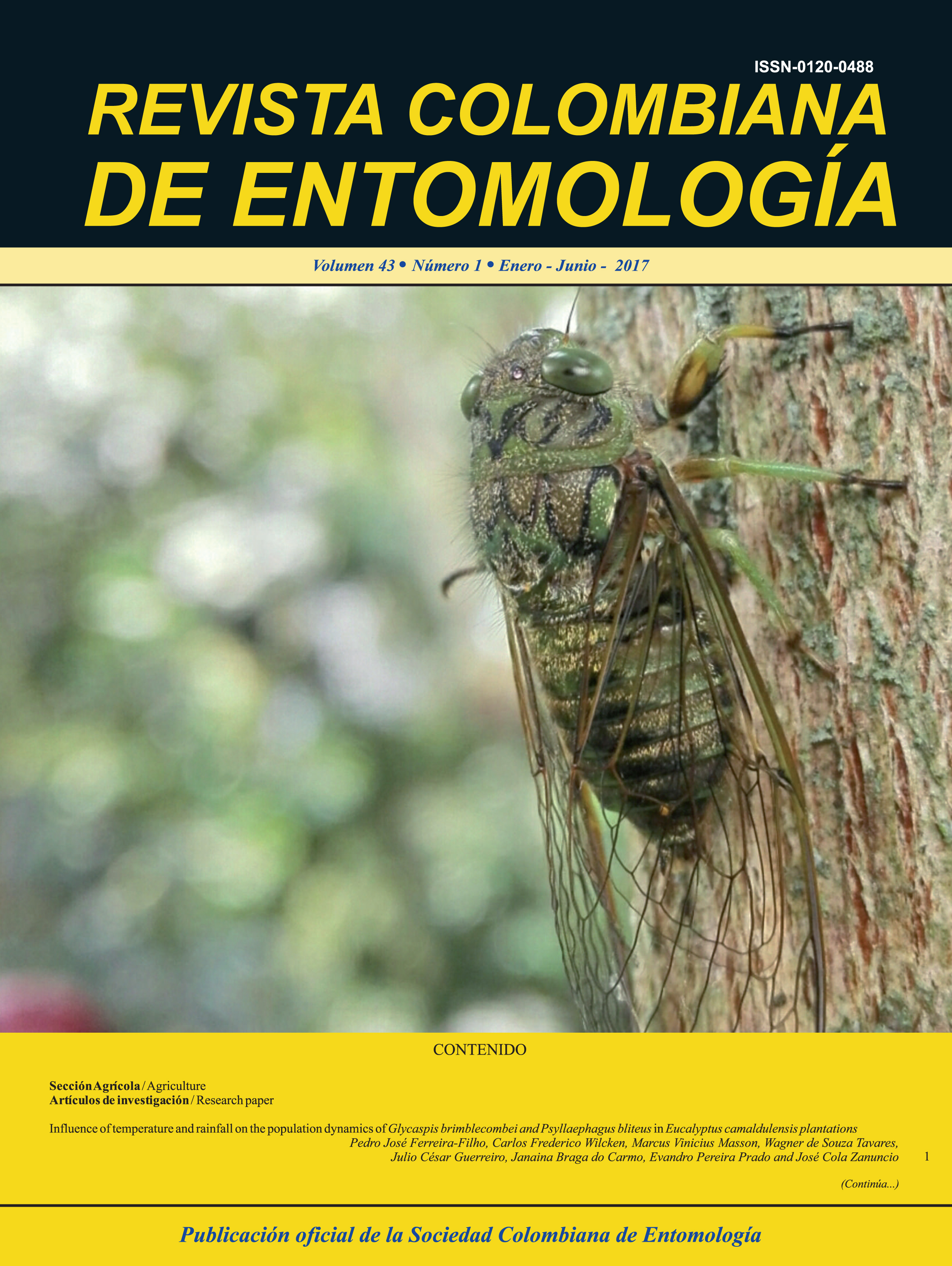Activity of two entomopathogenic fungi, molecularly identified, on bactericera cockerelli
Keywords:
Bioassays, Paratrioza, Entomopathogenic fungiMain Article Content
The potato psyllid Bactericera cockerelli affects solanaceous causes direct damage to crops in Mexico, as well as transmitting prokaryotic pathogens such as Candidatus Liberibacter solanacerum (psyllaurous). In the past, it has been controlled mainly using chemical products, while recent management strategies seek different strategies, including the use of enthomopathogenic fungi. The goal of this study was to evaluate the susceptibility of the potato psyllid to commercial and native Metarizhium anisopliae and Be. bassiana strains, and to determine the identity of these
fungi through molecular techniques. Bioassays were done under laboratory conditions using the wild type (MA25) of anisopliae, the commercials strain (Metabich®, MA28), the Be. bassiana BB42 wild type strain, and the commercial strain Bassianil® BB09. Five different conidia concentrations were tested against third instar nymphs of Bactericera cockerelli, and their corresponding LC50 and LC95 were determined. The strains tested were pathogenic against the potato psyllid, with the highest virulence obtained using BB09 followed by BB42 and MA28. Using the highest concentrations of the strains, mortality varied between 90 and 100%, with the most virulent being BB09 with a LC50 of 2.99 x 104 conidia per ml, and the least virulent being MA25, with a LC50 of 6.34 x 105 conidia per ml. Previously, the Be. bassiana and M. anisopliae wild type strains were identified using conventional methods; this report confirms them through molecular techniques based on the cloning and sequencing of their rDNA 18S gene.
Downloads

This work is licensed under a Creative Commons Attribution-NonCommercial-ShareAlike 4.0 International License.
Authors retain the copyright on their work and are responsible for the ideas expressed in them. Once a manuscript is approved for publication, authors are asked for a publication license for the term of legal protection, for all territories that allows the use, dissemination and disclosure of the same.

